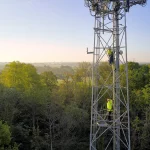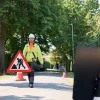A Few More Details on BT’s Ultrafast Bradford FTTP Broadband Trial
BT Wholesale has given a small, but useful, update on the progress of the native Fibre-to-the-Premises (FTTP) broadband technology trial in Bradford, which among other things confirms that the full network build should now be practically complete (subject to landlord permissions and further testing).
The Bradford trial, which aims “to explore if the technology can be installed faster and more efficiently in business parks and high streets” (e.g. it will look at reducing the need for several engineers to cut and melt fibres together), is currently (Phase One) focused on the areas of Kirkgate High Street and Listerhills Science Park.
Advertisement
Initially the trial will offer the standard 330Mbps (30Mbps upload) FTTP product and we now know that this will be followed in July 2016 (TBC) by a new special offer and product trial that will introduce the expected 500Mbps (100Mbps) and 1000Mbps (150Mbps) variants; the latter is considered more of a “premium” solution.
Andy Hurley, BT Wholesale, said:
“At Kirkgate (a ‘High Street’ location) the pre-build is to the Connectorised DP and with an early survey to prove the lead-in path to the building where this exists already. At Listerhills (a ‘Business Park’ location) the pre-build will extend to the premises itself.
This is in the early stages, and full network build is not yet complete (BTW has been advised that this will be complete by late April, which is subject to landlord permissions and further network testing).
The trial product being offered now is based on the current 330/30Mb variant and the standard GEA-FTTP process. BTW is currently undergoing systems testing to ensure a smooth path for trial orders and a product briefing and other communications will follow when BTW is able to progress orders.
The new higher bandwidth Business FTTP options would be the focus of a special offer and product trial phase (provisionally starting from July – TBC) introducing 330/50, 500/100 and 1000/150Mb variants.”
Apparently the trial is expected to be expanded to more locations in the area as part of a future Phase Two deployment, although no date or details have been set.. yet. Crucially Hurley also indicated that the product launch could then be ready by Q3 16/17 at the earliest (BT Wholesale’s calendar – likely to mean late autumn or early winter 2016).
Hopefully the trials will enable Openreach to speed up and simplify their FTTP installation procedures just enough to make the technology more viable for wider deployments. This is all in keeping with Gavin Patterson‘s (BT Group CEO) commitment to “accelerate the deployment of fibre-to-the-premises significantly” (here), although we’re still waiting to see some solid goals (like Virgin Media have just done).
Mark is a professional technology writer, IT consultant and computer engineer from Dorset (England), he also founded ISPreview in 1999 and enjoys analysing the latest telecoms and broadband developments. Find me on X (Twitter), Mastodon, Facebook, BlueSky, Threads.net and Linkedin.
« BT Openreach Detail Next Batch of UK Ethernet Price Reductions

















































Comments are closed